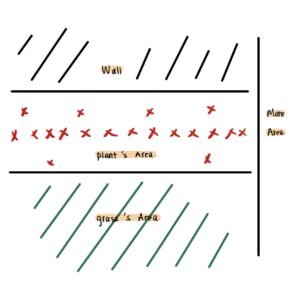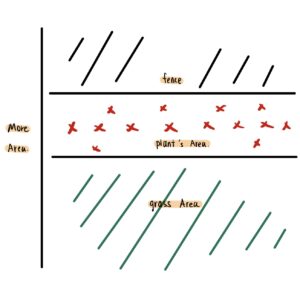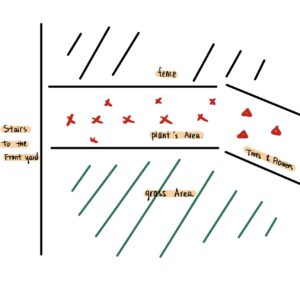1. The organism that I am going to study is Kale.

2. Location 1: This location is among the best in the backyard for growing vegetables. Here, under the condition of ensuring that the Kale get the most sunlight, water (or rain), and can provide enough shade, it is guaranteed that the Kale grown will not be exposed to the sun too much. So this is my preferred position.

Location 2: The soil in this area is the same as the soil in Location 1. Kale has been planted in this area before, but the growth effect is not satisfactory. We think that most of the soil does not get enough sunshine time because of the shelter of the house, so the Kale do not absorb enough sunlight and do not grow or stop growing.



Location 3: This location is shady at sunset and mostly in a daylight hour. If we can ensure that the planted Kale can get enough water, it can grow normally. The bad thing about this location is that neighbour’s or other creators from the front yard can invade the location due to being too outside. Perhaps it is covering the sun, or gnawing on plants, which affects Kale’s nutrient absorption and normal growth.


Now if we want to grow vegetables and fruit and we want to harvest during normal plant growth time, Location 1 would be our first choice. Because according to the previous planting experience and harvest results, compared to Location 2&3, Location 1 does not require much human care. But each region still has its pros and cons.
Hypothesis: Kale plants will exhibit optimal growth at 25°C, while growth will be reduced at both 10°C and 40°C temperature extremes.
Response Variable: growth rate of Kale (continues). Measured by cm that the Kale grow.
Predictor Variable: temperature (continues). Recorded as ‘10°C’, ‘25°C’, and ‘40°C’.
Study design: regression. The response variable and predictor variables are both continues.
Hi!
I think you are doing a good work! The prediction is falsifiable with clear piece and pattern. The predictor and response variables are easily measurable though the measurement of temperature requires a tool and careful set up of the locations. Potentially confounding variables could be the soil humidity and the sunlight they received, so which should be carefully managed. Overall, I think this design is good!